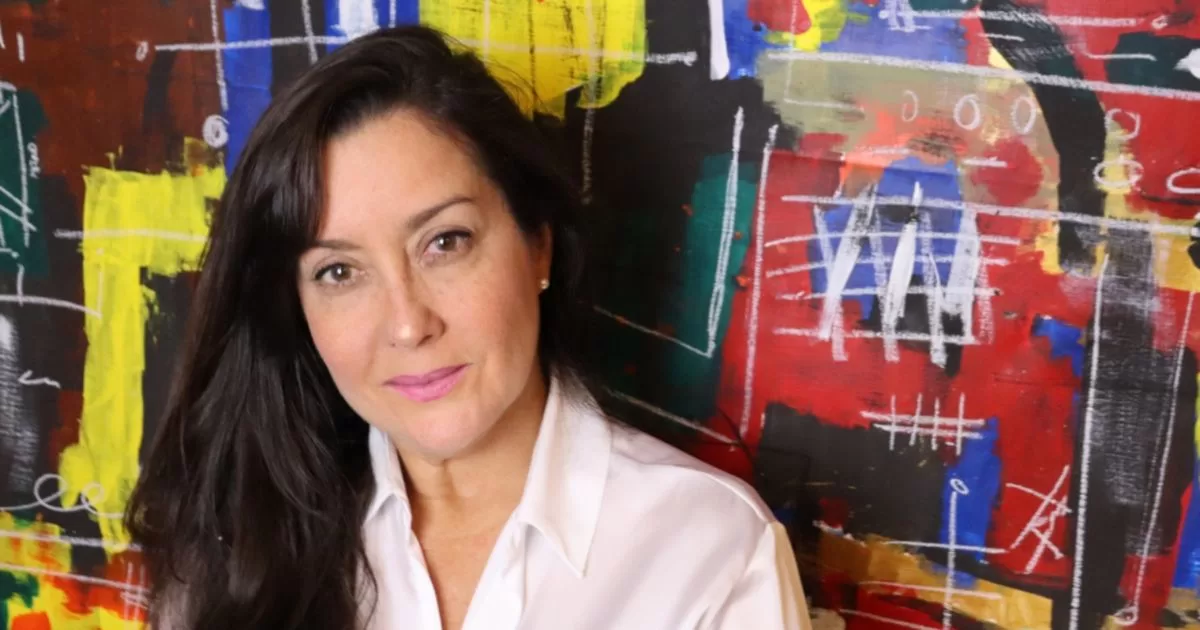After the November inflation figure of 4.9%, the Consumer Price Index (CPI) in December accelerated and hovered between 5.2% and 6%according to the estimates of most consultants.
The Fundación Libertad y Progreso (L&P) and Eco Go calculated that inflation for December was 5.2%, while Analytica estimated 5.4% and the Ferreres survey showed 6%. Meanwhile, in C&T -which relieves Greater Buenos Aires-, it gave 6.2%. In contrast, at ACM they projected that inflation for the last month of 2022 would have remained at 4.9%.
Thus, annual inflation was below the feared triple digits, in line with the Government’s aspirations. According to private forecasts, the year 2022 closed with inflation between 93.7% and 97.4%.
Anyway, Eugenio Mari, chief economist of the Libertad y Progreso Foundation (LyP) indicated that it is the highest inflationary record “since 1991when the blows of hyperinflation were felt”.
In addition, the problem would worsen this year, since the consultancies forecast that inflation will be higher in 2023 and will exceed triple digits.
Inflation: the main increases in December
Among the increases that affected December were prepaid (6.9%), fuel (4%), private school fees in the province of Buenos Aires (10%) and in the city of Buenos Aires (14.5%), and cigarettes among others.
Inflation in December accelerated and hovered between 5.2% and 6%, according to private consultants
According to the survey of the consultancy ferreres the headings Education and Leisure led with increases of 11% and 8.5% respectively, followed by Transport with a variation of 6.8%.
According to the survey of eco goThe Education item was also the one with the greatest increase (+10.8%) due to the impact of the increase in private schools. It was followed by Leisure with a rise of 8.5%, driven by tourism prices due to the start of the summer holidays.
In addition to these two items, in C&T They stood out among the sectors that rose the most in the month to Housing, “due to the increase in expenses due to the Christmas bonus and the bonus for those in charge of buildings”; Health, “due to the sustained increase in medicines and the 6.9% adjustment in prepaid; and Home Equipment and Maintenance, “due to the increase in the wages of domestic workers.”
Slowdown in food prices
Private measurements reflected that Inflation in the Food and Beverage category was below the general price index in December. Analysts partially attributed it to the impact of the entry into force of the Fair Prices plan
In C&T They pointed out that “continuing with the moderation of November, food and beverages was the item with the lowest increase in the month, with 3.8%.”
the survey of eco go Food and Beverages saw an increase of 4.4% in December, that is, 0.2 percentage points lower than November, and accumulates in the year an increase of 95.8%. In this regard, the consultant maintained that “Fair prices seem to be paying off”.

Food inflation slowed in December due to the impact of the Fair Prices plan
But the consultant also linked the slowdown in food inflation to “two other factors with a strong impact on the indicator: the price of meat, which continues to be totally depressed as a result of the oversupply of cattle caused by the increase in food prices after the drought, and the restrictions of the Chinese market, and the evolution of the price of vegetables that, after several months of increases, showed very moderate variations in November and December (2.2%)”.
As detailed, the category Fruits led the month with an increase of 17.3%, followed by sugar, honey, sweets and cocoa with an increase of 4.7%, and beverages and infusions with 3.8%“.
Agustin Berasategui, ACM economist, also said that the slower rate of increase in Food is due “partly to the Fair Prices agreement, but also to a real drop in the value of meat due to a greater supply.”
At the same time, Camila Antequera, Ferreres economist, commented that “due to the Fair Prices plan, a slightly greater impact was noted in food and beverages, registering an increase of 4.6% in December against the 4.8% that we had measured in November.”
For its part, the survey of LyP showed that the Food item climbed 4.2% in December, and agreed that “this would have been explained, at least partially, by the implementation of the ‘Fair Prices’ Program.”
Inflation: how much will 2022 close?
After the inflation data in November of 4.9%, which was lower than expected, and the estimate for December, the end of inflation in 2022 will not finally reach triple digits.

Accumulated inflation during the administration of Alberto Fernández reaches 300.6%, according to LyP estimates
The measurement of C&T showed an annual inflation of 97.4%, that of Eco Go 95.8%, Analytica 95% LyP 94.9%, ACM 94.4%, and Ferreres 93.7%.
In LyP they remarked that “Within the last decade, the price rise in 2022 is almost double that in the most inflationary years that follow, 2019 (53.8%) and 2021 (50.9%).”
Likewise, the consultancy indicated that “accumulated inflation during the first 36 months of the presidency of Alberto Fernández it stood at 300.6%“.
“In this way, it was already above the record for the entire period December 2015 – December 2019, when the accumulated price increase was 295.7%,” he emphasized.
Aldo Abramdirector of LyP pointed out that “beyond the temporary impact of price controls, since November confidence in the current economic management has been diluting since there were no fundamental changes”, and “this has caused a new growing decline in demand of currency and its purchasing power, which was observed in the rise in parallel dollars and which was accelerated by the President’s absurd decision to attack the Supreme Court”.
In this context, he warned that “of If this attitude that generates expectations of an institutional crisis is sustained, we Argentines will pay for it with a greater increase in inflation in the coming months”.

Analysts warn that if the blue jump is accentuated it could impact inflation
Inflation: will the jump in the blue dollar revive it?
With the launch of Prices, the Minister of Economy, Sergio Massa, said that he aspires for inflation to drop 1 point every two months to reach 3% in March. For economists, that objective seems “demanding”, they envision an inflationary floor of 5% for the coming months, and they even warn that if the rise of the blue dollar persists -which recently jumped from $320 in mid-December to a record of $357- could impact on prices.
On the effect of Fair Prices, Claudio Caprarulodirector of Analytica, stated that “it is not an anti-inflationary policy, but rather it can help coordination, but the percentage of goods that are included in the latest official data is from November and it was less than 3%, so it does not stop moving the ammeter”.
“We see it as very difficult for inflation to reach 3% because the official devaluation rate is still around 6% and the parity rates are going to 11% per month and above from here to April, so now with those very important costs of the economy growing at that rate it is very difficult to think that inflation is going to give half”.
of the same look, Mari He commented that “for January we estimate inflation of 6.1% driven by seasonality and by adjustments in regulated prices.” Regarding the impact that the recent jump in the blue could have, the economist argued that “the exchange market is where the loss of value of our currency is reflected more quickly” and maintained that “in an economy with high inflation the exchange rate becomes the reference variable for companies and workers when setting prices”.
“Consequently, having exchange rate instability pushes inflationary expectations upwards and could contribute to the acceleration of prices in January,” he predicted.
The Economist Camilo Tiscorniafrom C&T evaluated that the rise in the blue “has some inflationary impact, especially in some imported productsalthough it is more limited than that of the official dollar, which is the most relevant exchange rate for prices”. He predicted “an inflation floor of 6% for January” and considered that “reaching 3% in March is very difficult, I think that it would be an achievement if inflation settled around 5%”.

Massa aspires to lower inflation for March to 3%, but economists see a floor of 5% for the coming months
For his part, berasategui anticipates that “reaching March with 3% monthly inflation seems feasible, although the value of the parallel dollar could affect the formation of expectations, in the same way that a correction in the price of meat could affect the index”.
“The impact of this blue jump should be insignificant on prices, but it is possible that it will have some effect in the coming months if the trend continues,” he said.
In addition, Antequera stated that “the jump in the blue will put pressure on inflation, mainly affecting tradable products, which have to be determined more by the evolution of the parallel market than by the official dollar”. In this context, the economist specified that “for January we project inflation of 5.6% with a floor of 5% for the following months”.
For Sebastian Menescaldi“It must be taken into account that the relationship of inflation with the blue is weak and the transfer is not immediate, it should have a greater and more persistent jump” and recalled that “the times that it was transferred to prices it was due to a significant jump, such as when the gap jumped to 160%.”
In Eco Go for January they project an inflation of 5.1%, due to the fact that this month they impact increases in prepaid, electricity, gas and water rates -due to a new section of the removal of subsidies-, fuels, bus and train tickets in AMBA, and mobile telephony and cable services.
Inflation: what is the projection for all of 2023?
Economists predict that inflation in 2023 will be higher than in 2022, and they envision it in triple digits.

Economists project that inflation in all of 2023 will exceed triple digits
Antequera said “by 2023 we expect inflation to be around 100%, a value slightly higher than that observed in 2022, due to the increases in regulated prices expected for the first months of the year, the exchange pressures and the monetary issue resulting from the purchase of debt in pesos by the BCRA and the new soybean dollar” .
in the consultancy fmya They project that inflation at the end of this year will be “more than 100% because the macro imbalance continues; the Treasury and the debt in pesos need to be issued by the BCRA and the exchange rate delay continues.” Added to this is the impact of “Rate adjustment, meat rebound, drought.”
Menescaldi clarified that “for all of 2023 we do not have a projection, until November the estimate is 109.4% year-on-year, the product of greater inertia, the rise in rates and greater monetary uncertainty,” and warned that “Without a stabilization plan on the horizon, the situation looks complex.”
Mari recounted that in LyP by 2023 they project “a price increase of 106%“.



